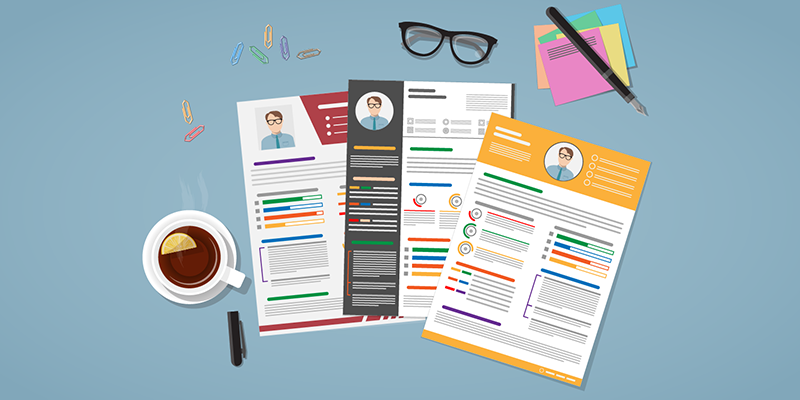
How to Tailor Your Resume to Every Job
One of the best things about the internet is that it’s simplified the process of finding and applying for jobs. And though the simplicity of many sites (like remote.co!) helps many job seekers, you won’t want to overlook the details of each job posting and send a generic resume just because applying is easy.
Of course, the problem with uploading the same resume for every job you apply to is that, well, it’s the same resume. It might be the most well-written resume you’ve ever created, but is that enough to get you the job?
Using the same resume to apply for every job may actually hurt your chances of getting an interview. Between mechanical resume screeners and human recruiters looking for specific elements, if you’re not taking the time to tailor your resume to each and every job you apply to, you may find yourself spending a lot more time looking for work than you want.
One Size Does Not Fit All
Though it’s easier to create one stellar resume that sums up who you are as an employee, “gone are the days that a job seeker can use one resume for every position,” warns Betsy Andrews, a Career Coach for Remote.co and its sister site, FlexJobs.
These days, many employers use an Applicant Tracking System (ATS) to screen applications. These programs are configured to look for certain keywords on your resume. “If a resume does not reflect the key terms and phrases from the job description,” Andrews explains, “the application will end up further down on the list and may never be seen by a human being.”
However, even if an employer doesn’t use an ATS, the reality is that a human recruiter doesn’t read your resume as much as they scan it. Says Andrews, “The first physical read of a resume is exceptionally short, on average, less than 10 seconds.”
So, whether it’s a machine or a human scanning your resume, you’ve got to do everything you can to make sure your application stands out from the rest of the crowd. And the best way to do that is to tailor your resume to the specific job posting every time you apply.
How to Tailor Your Resume
At the outset, tailoring your resume every time you apply for an open position sounds like a lot of work. However, creating a customized resume doesn’t mean writing a new one from scratch every time you apply for a role. Instead, you start with a general resume template, then drop in certain custom elements before you hit “submit.”
That doesn’t mean tailoring your resume doesn’t take extra time. It does! However, the time you spend upfront creating a custom resume can save you time in the long run, connecting you with your new job faster than reusing the same resume for every job application.
Talk the Talk
As Andrews mentioned, one of the best ways to impress human and robot recruiters is to use keywords from the job description in your resume (and cover letter, too). But, what is a job description keyword, and how do you find them?
A keyword is a word or phrase that repeats throughout the job posting. The easiest way to identify keywords is to read over the posting and job description to see what words or phrases (and their variations) are repeated.
Do you see “marketing promotions, marketing strategy, event marketing,” and the like throughout the posting? Those are keywords that the recruiter is likely looking for, and you should try to weave them into your resume.
For example, instead of saying, “10 years’ experience promoting events,” try, “10 years’ experience in event marketing.” You’re saying the same thing, just in the recruiter’s “language.”
Try not to “stuff” your resume full of keywords, though. When you tailor a resume with keywords, you want to fit the words and phrases in naturally so your resume doesn’t seem stiff, forced, or poorly written. For example, you probably don’t want to say, “Expert marketer with experience marketing marketing plans to companies.” While it sums up what you did, it’s not a very well-written or naturally sounding description.
Ditch Objectives for Titles
Resumes no longer start with an objective since the recruiter knows your objective: to get a job. Instead, start with a title that sums up who you are and what you do in one sentence.
Because it appears at the top of your resume, this sentence is usually the first thing a recruiter sees. You want to create a title sentence that encapsulates who you are and what you do. Think of it as an elevator pitch: something quick, to the point, and attention-grabbing. Here are a few examples:
- Marketing professional with 15 years’ experience in healthcare
- Results-driven account executive with proven track record of retaining clients and growing business
- Sales professional with 10+ year history of increasing sales and retaining customers
Each of these examples sums up who the professional is, what they do, and what their key skills and experiences are.
Qualify Yourself
The next section of your resume is usually the qualifications section, sometimes known as the skills section or skills summary. This section highlights the important skills you want an employer to notice.
Generally, this section doesn’t include every skill or qualification you possess. It’s only the top five or six crucial skills you want to share with the employer. However, it’s easy to customize your resume in this section since you can highlight the skills you have using keywords from the job description.
Sprinkle Liberally
As you continue to tailor your resume, make sure you “sprinkle” the keywords throughout. Use them when you describe your duties and accomplishments in your previous roles, volunteer work, or other activities you’re featuring on your resume.
Successfully Tailor Your Resume
When you tailor your resume every time you apply for a job, you improve your chances of making it past a screener and into the “yes” pile. Customizing your resume does take extra time and effort, but is well worth it in the end.
Looking for more resume advice?
Read About Resume Tips to Help You Get Hired >
By Rachel Pelta | Categories: Work Remotely



